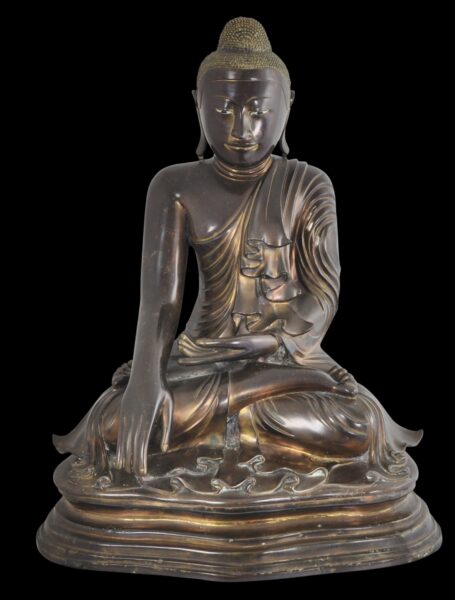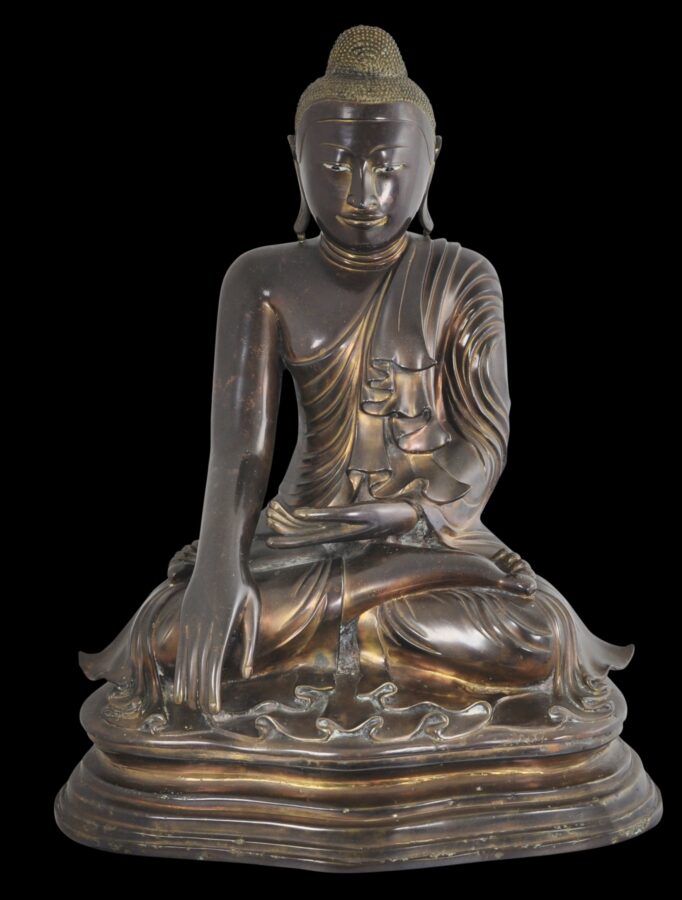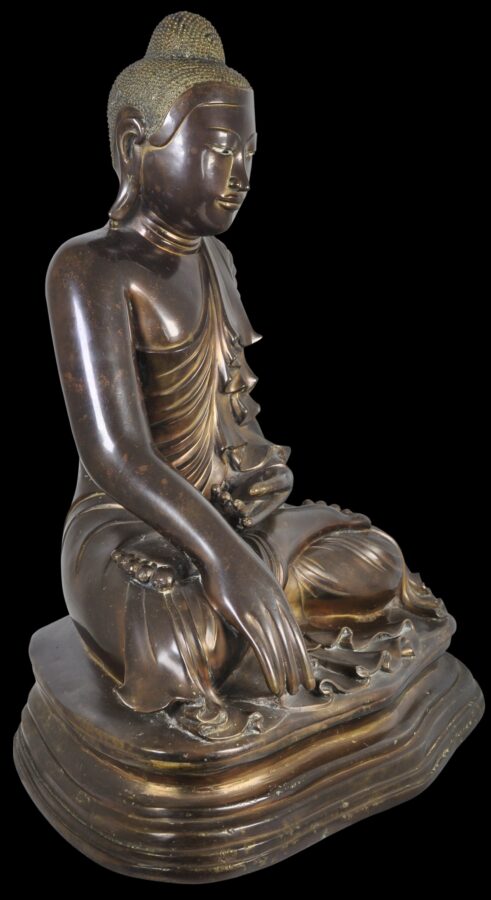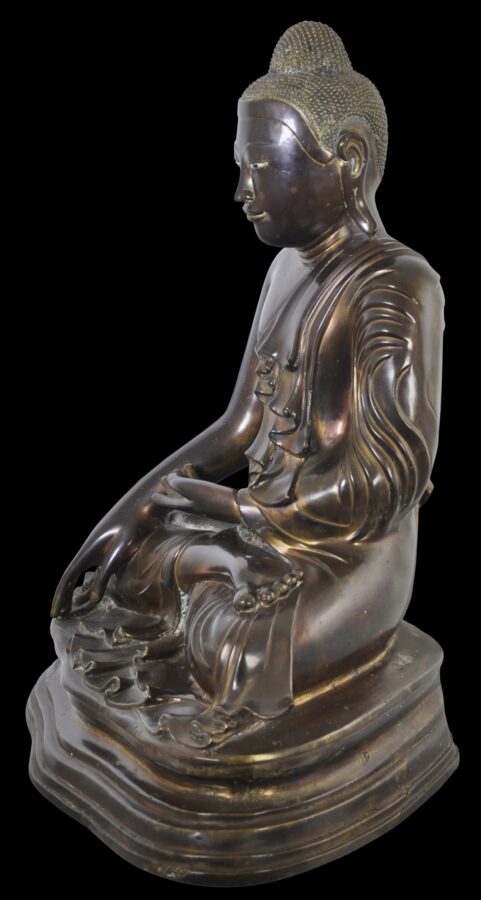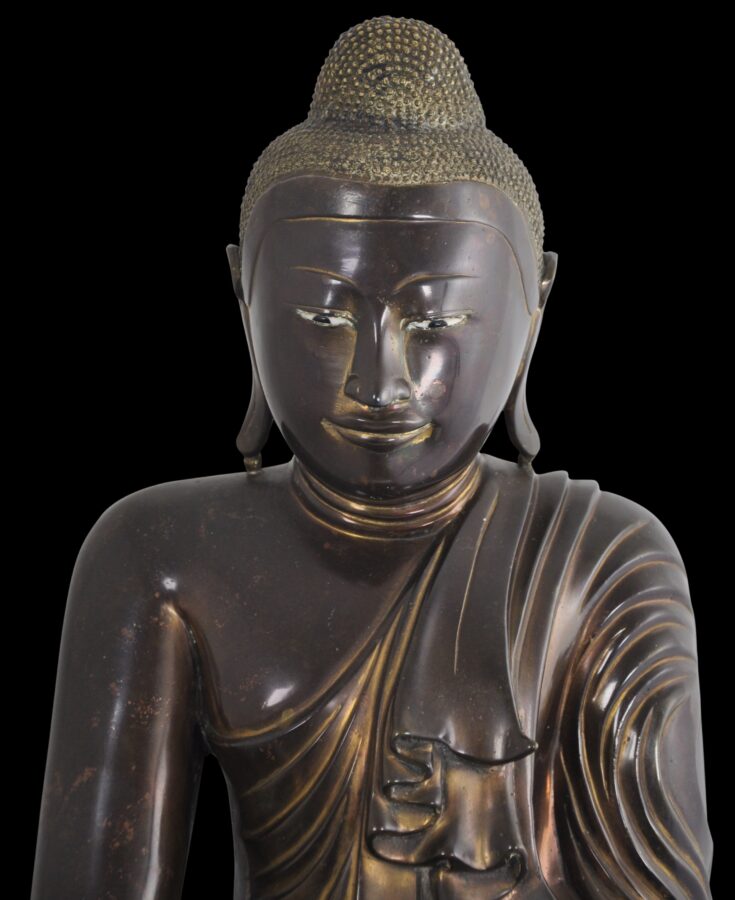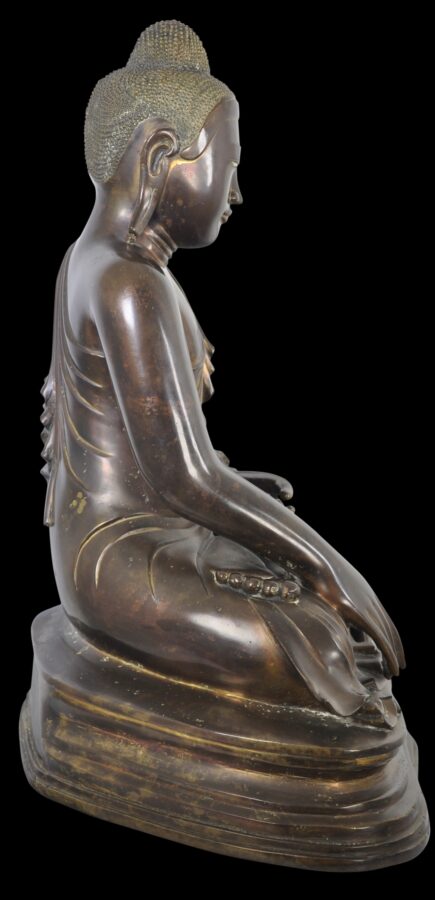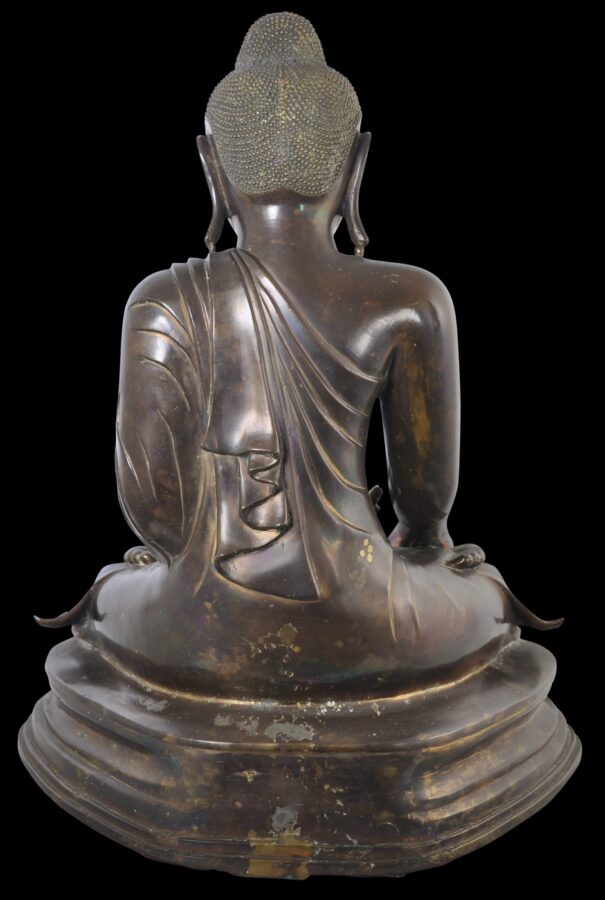Enquiry about object: 9232
Mandalay Burmese Bronze Buddha
Mandalay, Burma circa 1850
height: 49cm, width: 39.5cm, depth: 26.5cm
Provenance
UK art market
This large and particularly fine and naturalistic image of the Buddha has been cast in bronze in the Mandalay style. The quality of the casting is superior to most examples of this type. Most noticeably, the folds in the robes are especially fine and complex and give the appearance of the Buddha being draped in clouds.
It retains traces of gilding, and at one stage would have been entirely covered in gold leaf.
The image shows the Buddha seated in vajrasana, with his right hand gesturing to the earth in the bhumisparsa mudra position. Such a depiction is particularly characteristic of religious sculpture in Burma (Lowry, 1974). The posture, known as ‘calling the earth to witness’, represents the moment when the Buddha was seated in meditation under the Bodhi tree during the evening before his enlightenment. Mara asked him to name anyone who would give evidence that he had given alms, and the Buddha motioned to the earth with his right hand and said that the earth would bear witness to that – in a previous incarnation when he was known as Vessantara, he had given alms to such an extent that the earth had begun to quake.
The image shows the Buddha with a domed usnisha, and a head of tiny curls. The ear lobes are elongated, flare out from the head and just reach the shoulders: these are the ears of a prince whose lobes have been stretched by heavy, costly earrings. The eyes are downcast and meditative and yet the lips are upturned in a gentle smile. There are three neck creases.
The Buddha is seated on an elevated, tiered platform or socle, and dressed in ample robes with naturalistic folds and pleating. Earlier images of the Buddha across Southeast Asia tended to show the monastic robes in a much more schematic way.
The eyes have been inlaid with white shell over which pupils of black lacquer have been laid.
The image is hollow cast using the lost wax technique. The hand that rests on the lap appears to have been cast separately as is typical.
The image has a dark chocolate patina. Overall, the image is tremendously sculptural and decorative. This is a superior version of the Mandalay style Buddha.
References
Fraser-Lu, S., Burmese Lacquerware, White Orchid Books, 2000.
Karow, O., Burmese Buddhist Sculpture: The Johan Moger Collection, White Lotus, 1991.
Lowry, J., Burmese Art, Victoria and Albert Museum, 1974.
McGill, F. (ed.), Emerald Cities: Arts of Siam and Burma, 1775-1950, Asian Art Museum, 2009.


